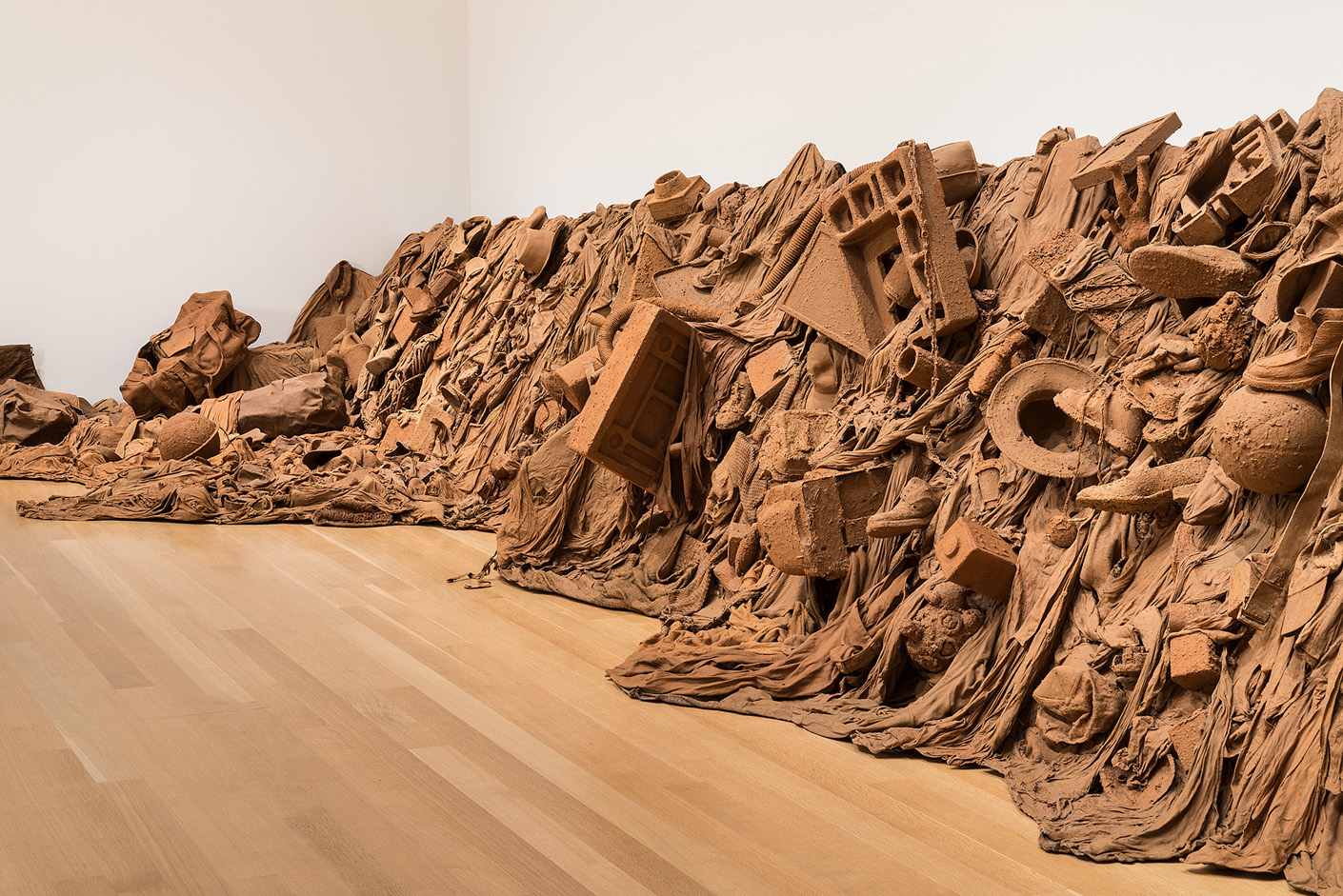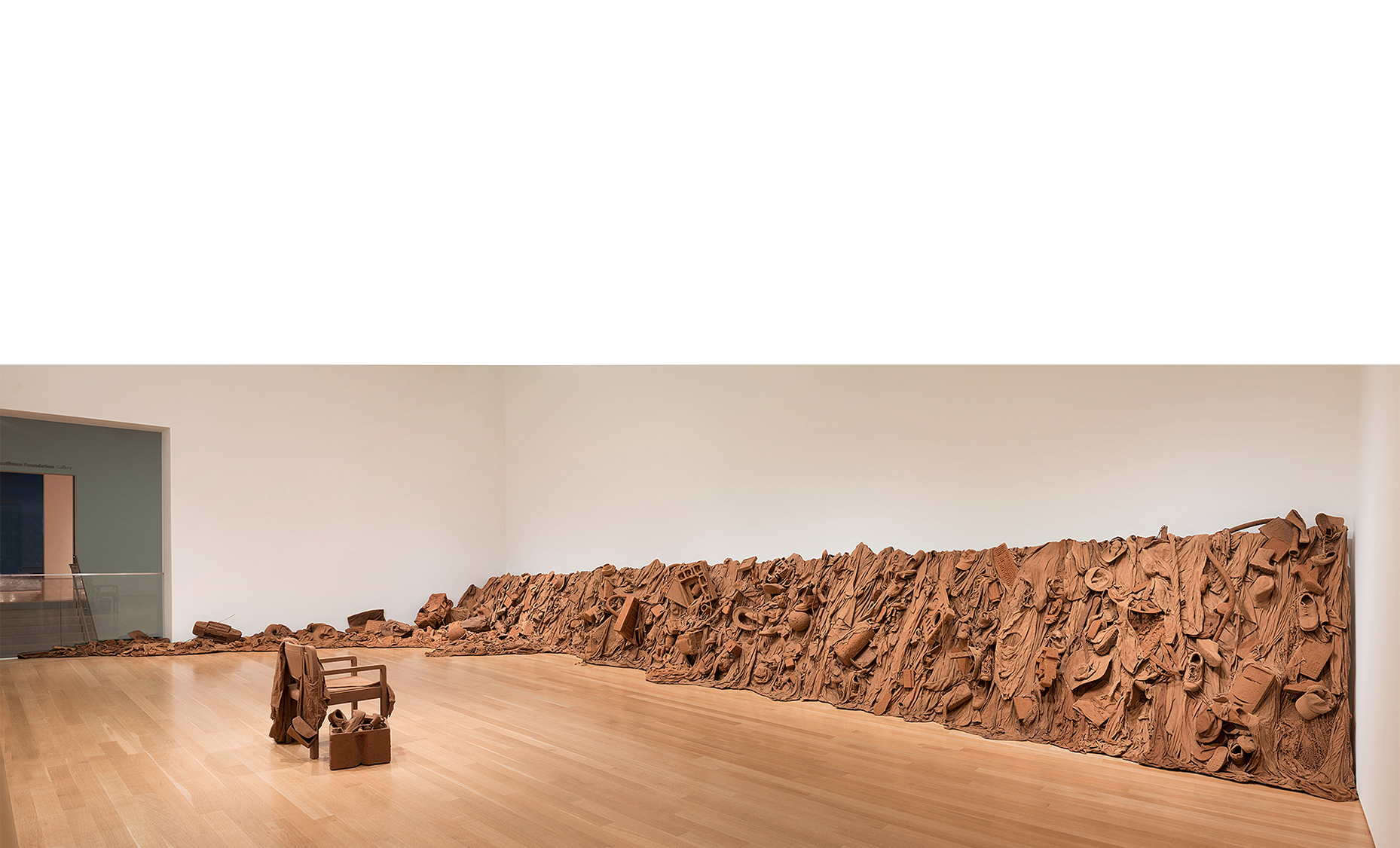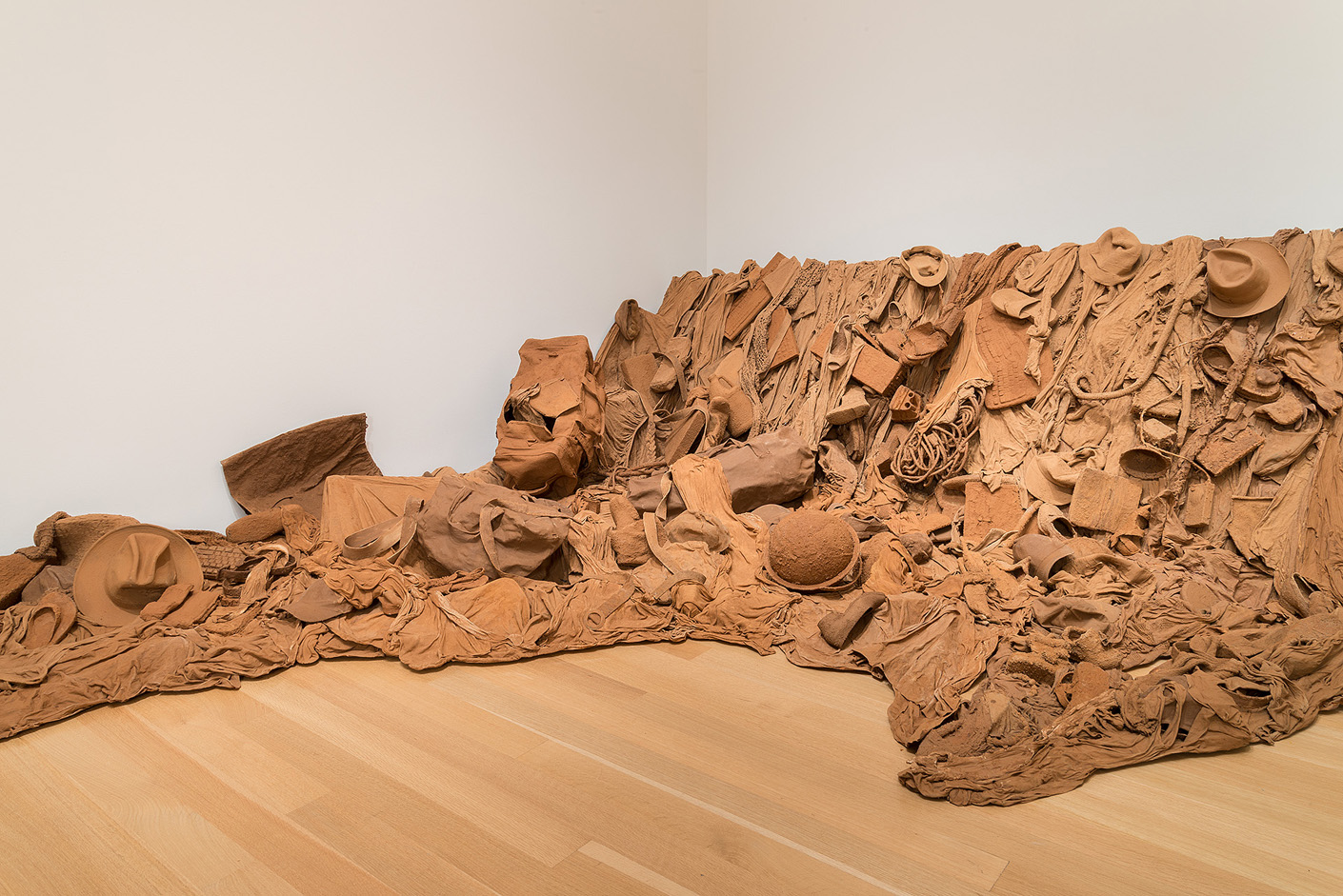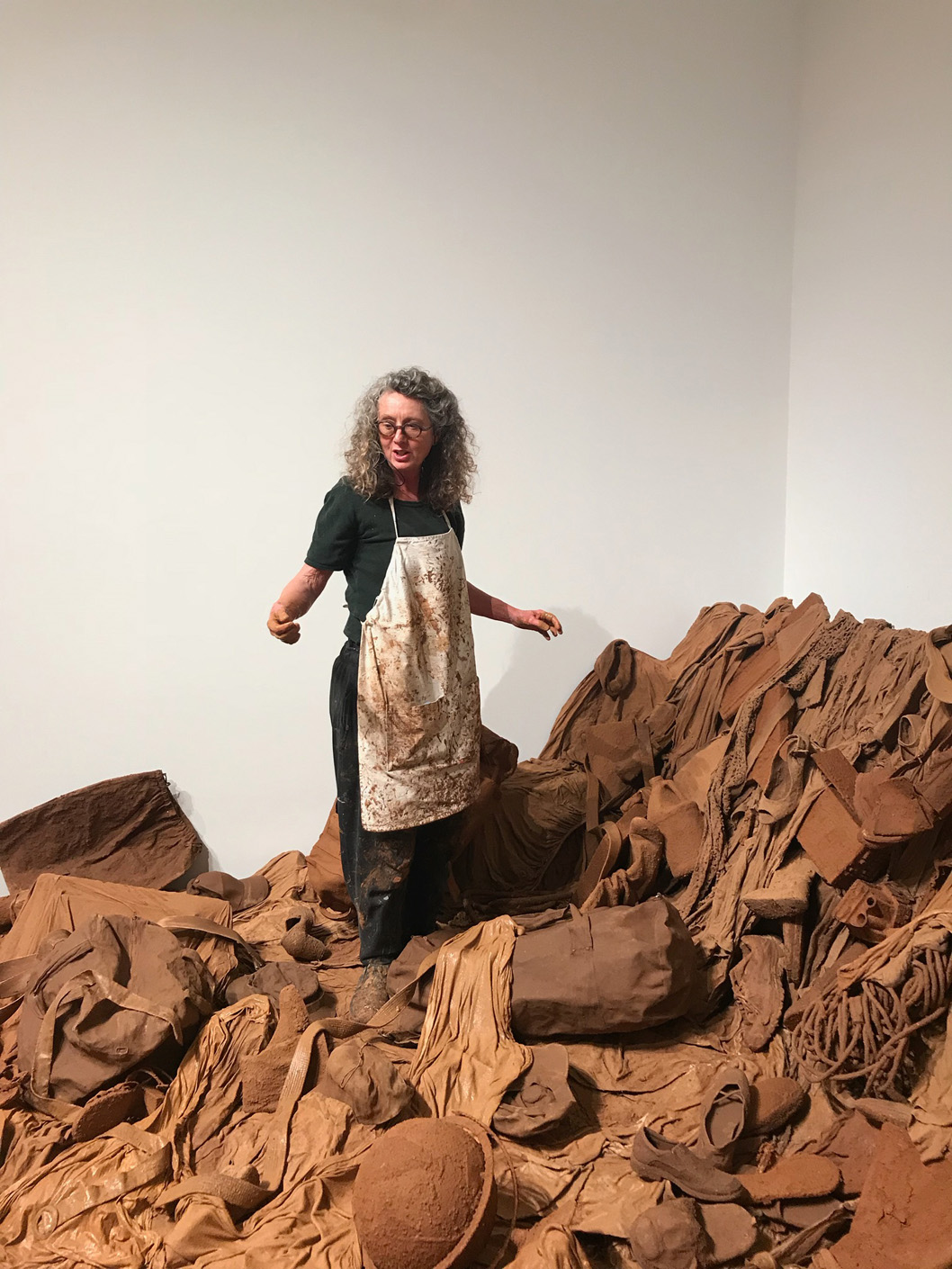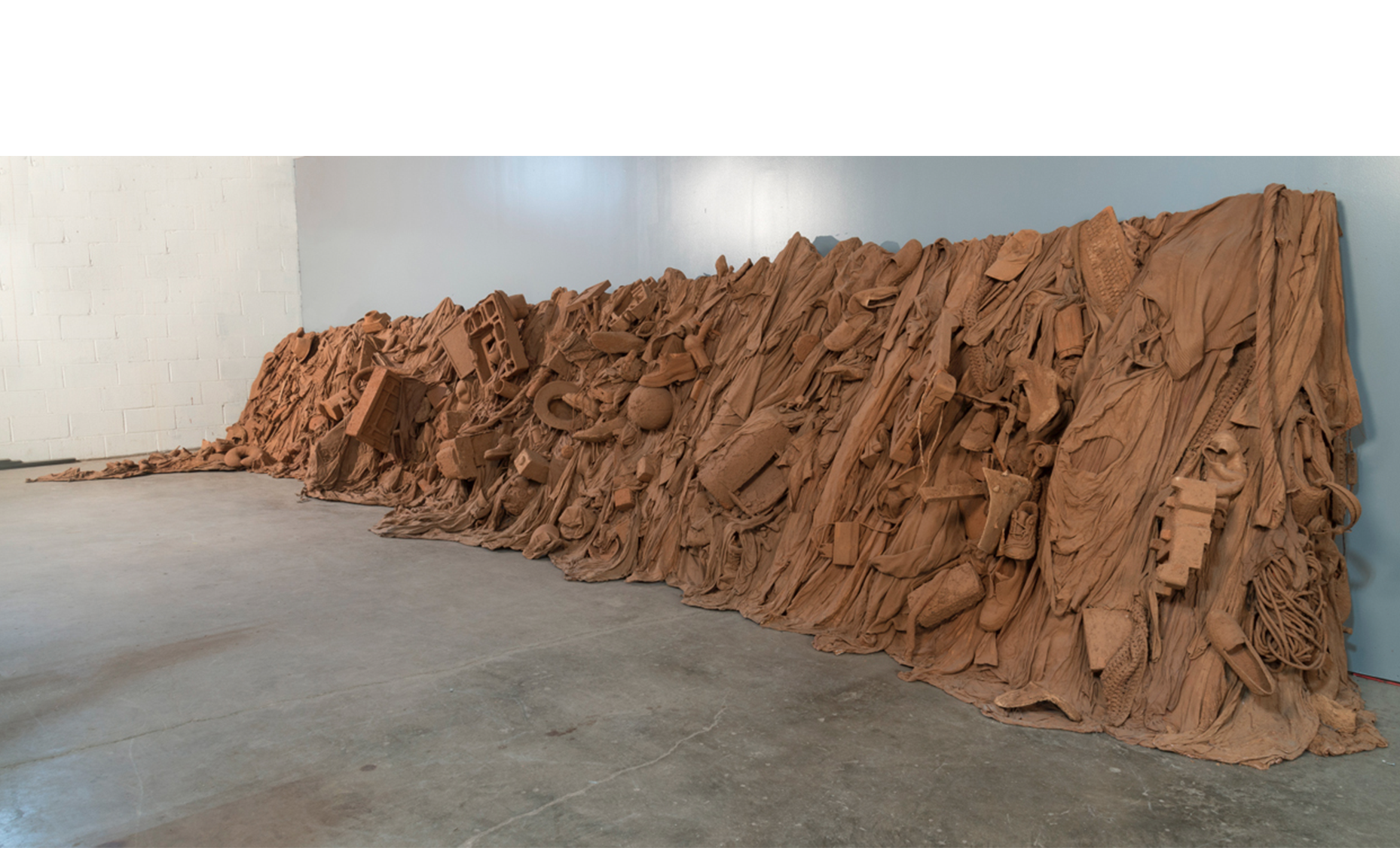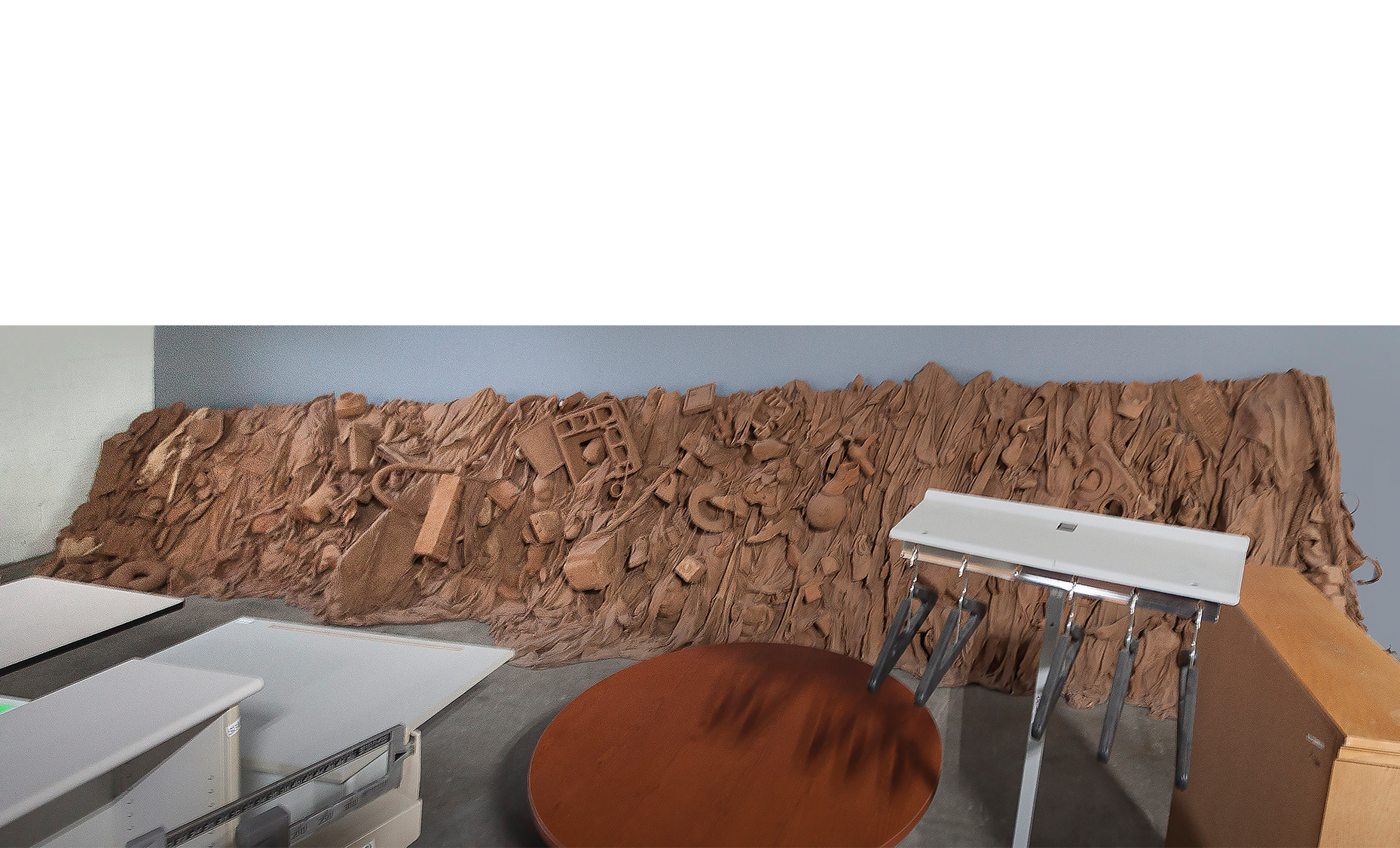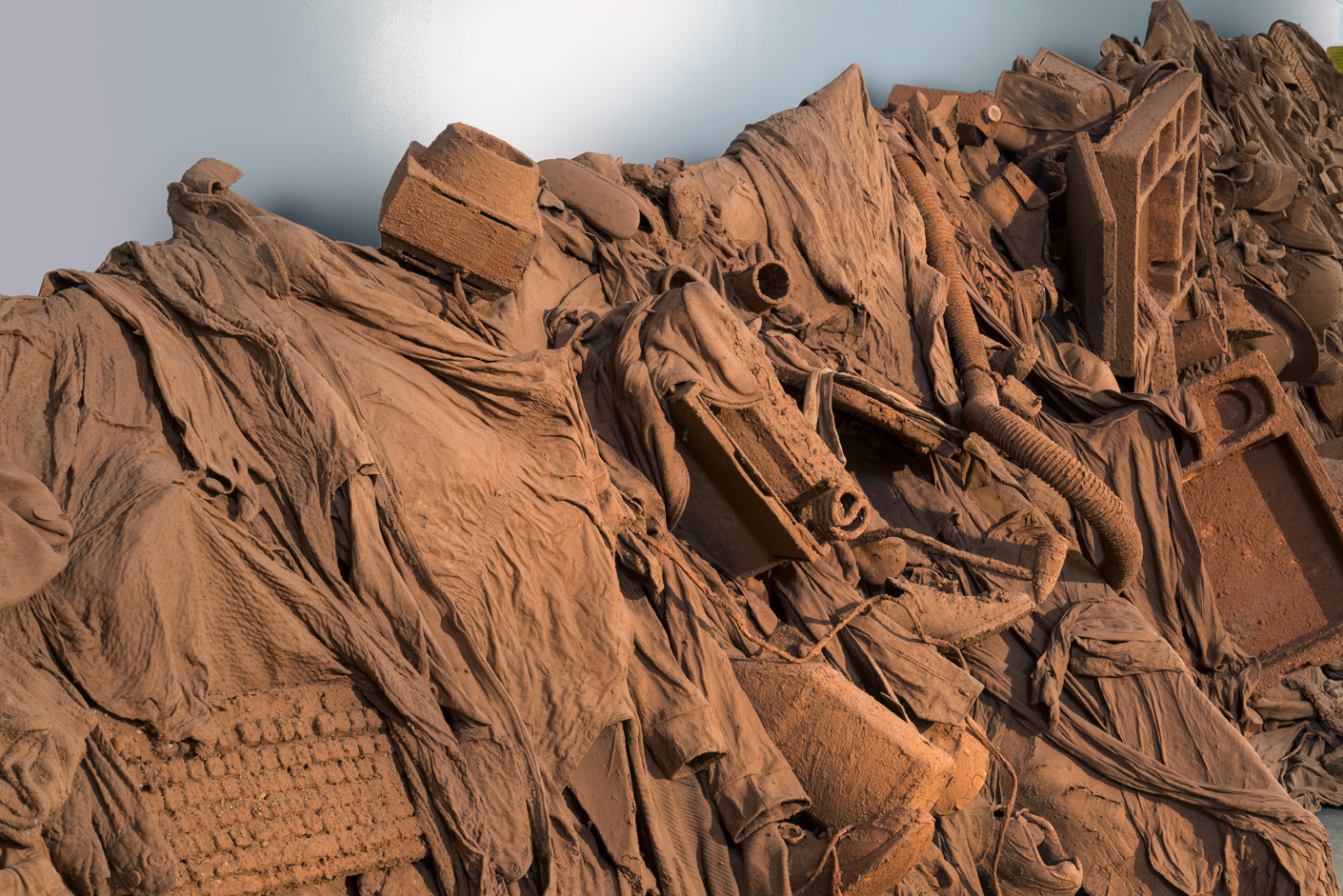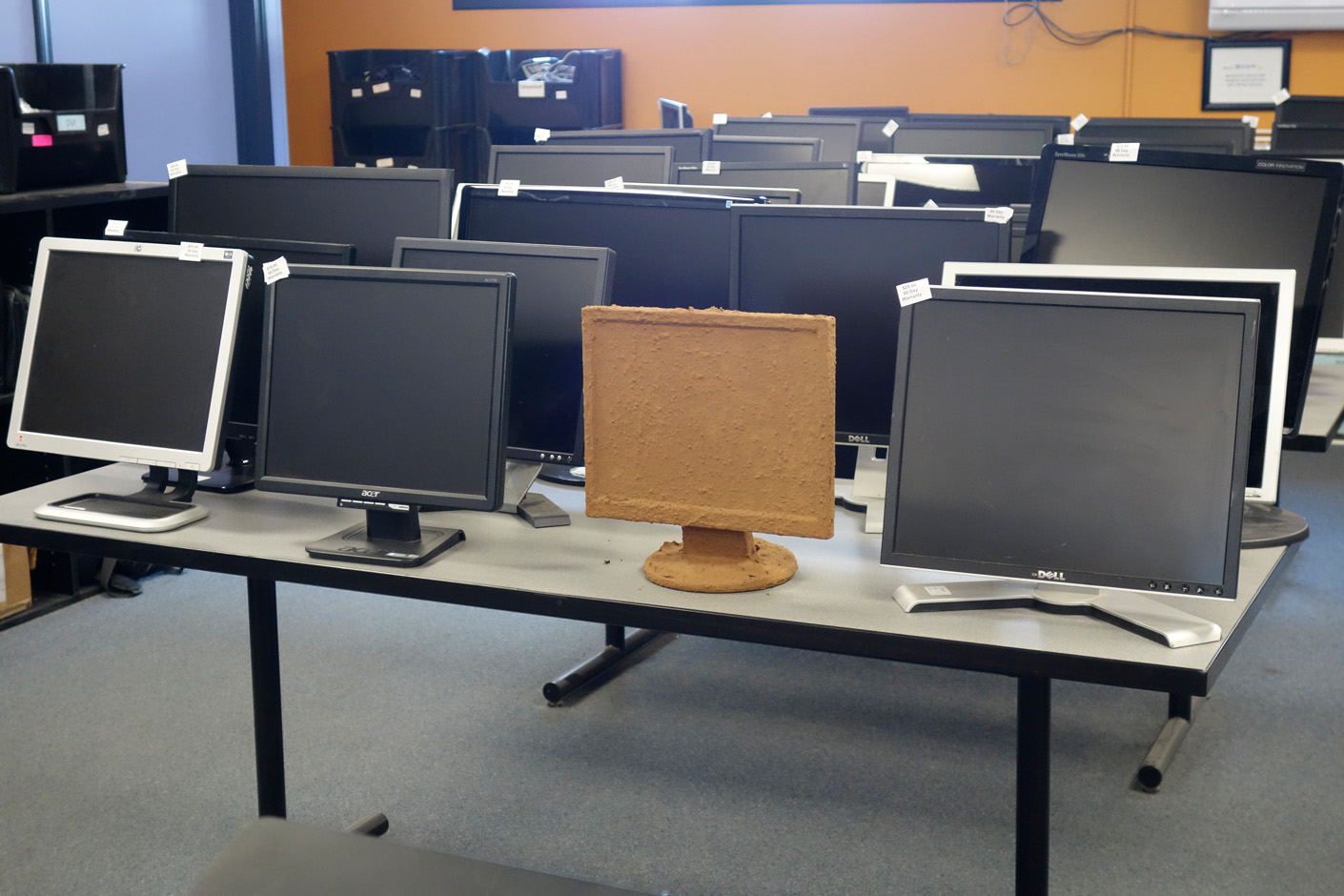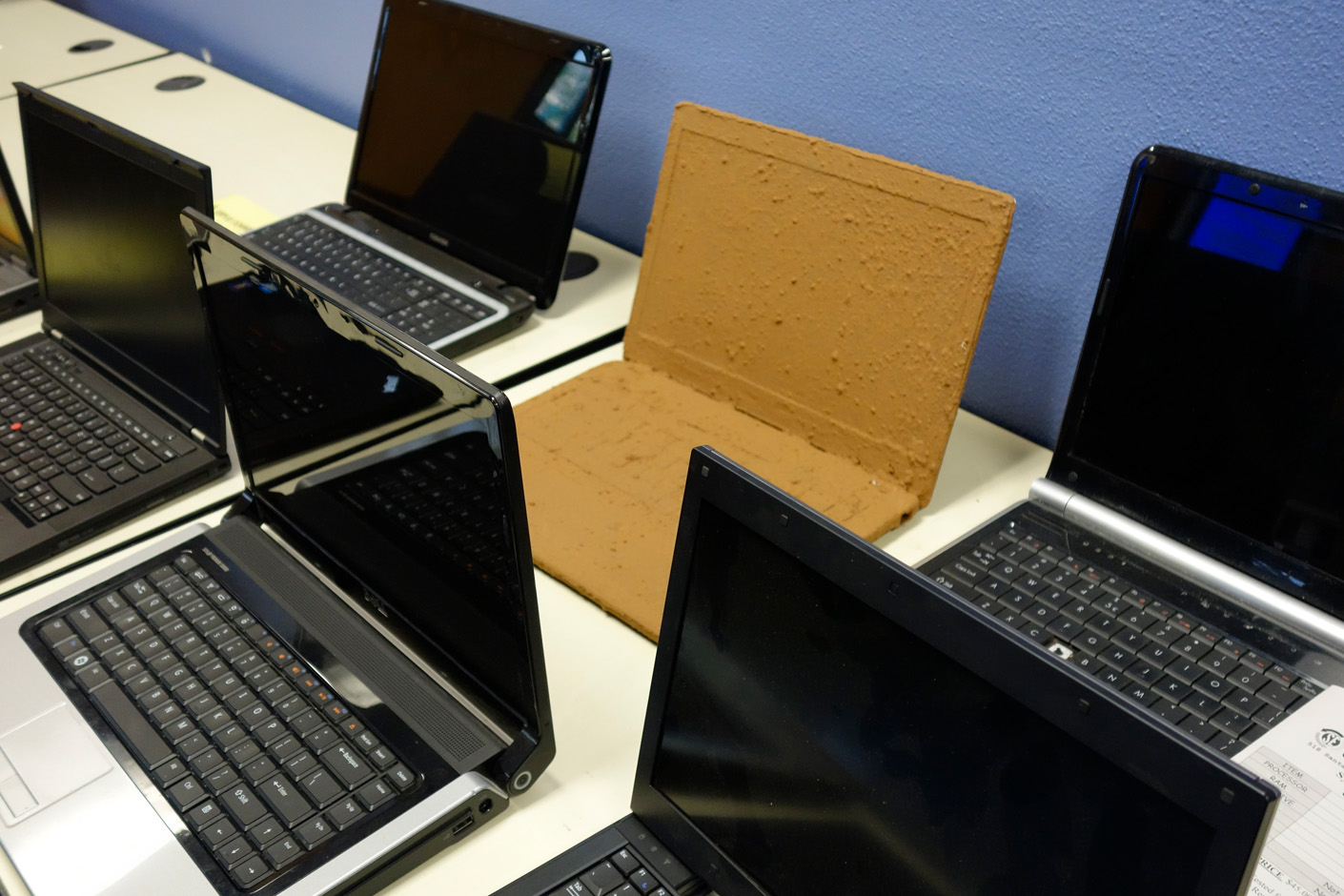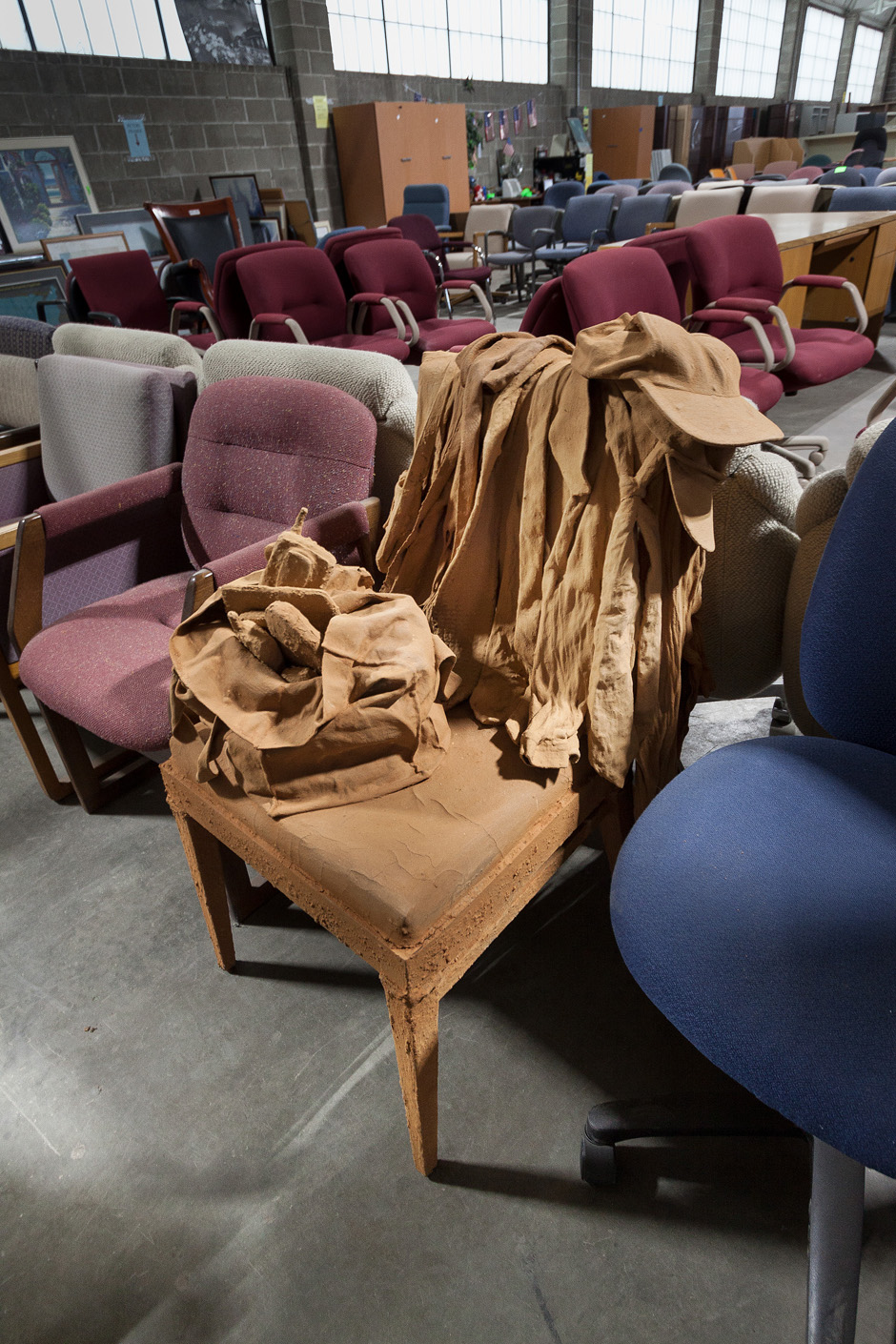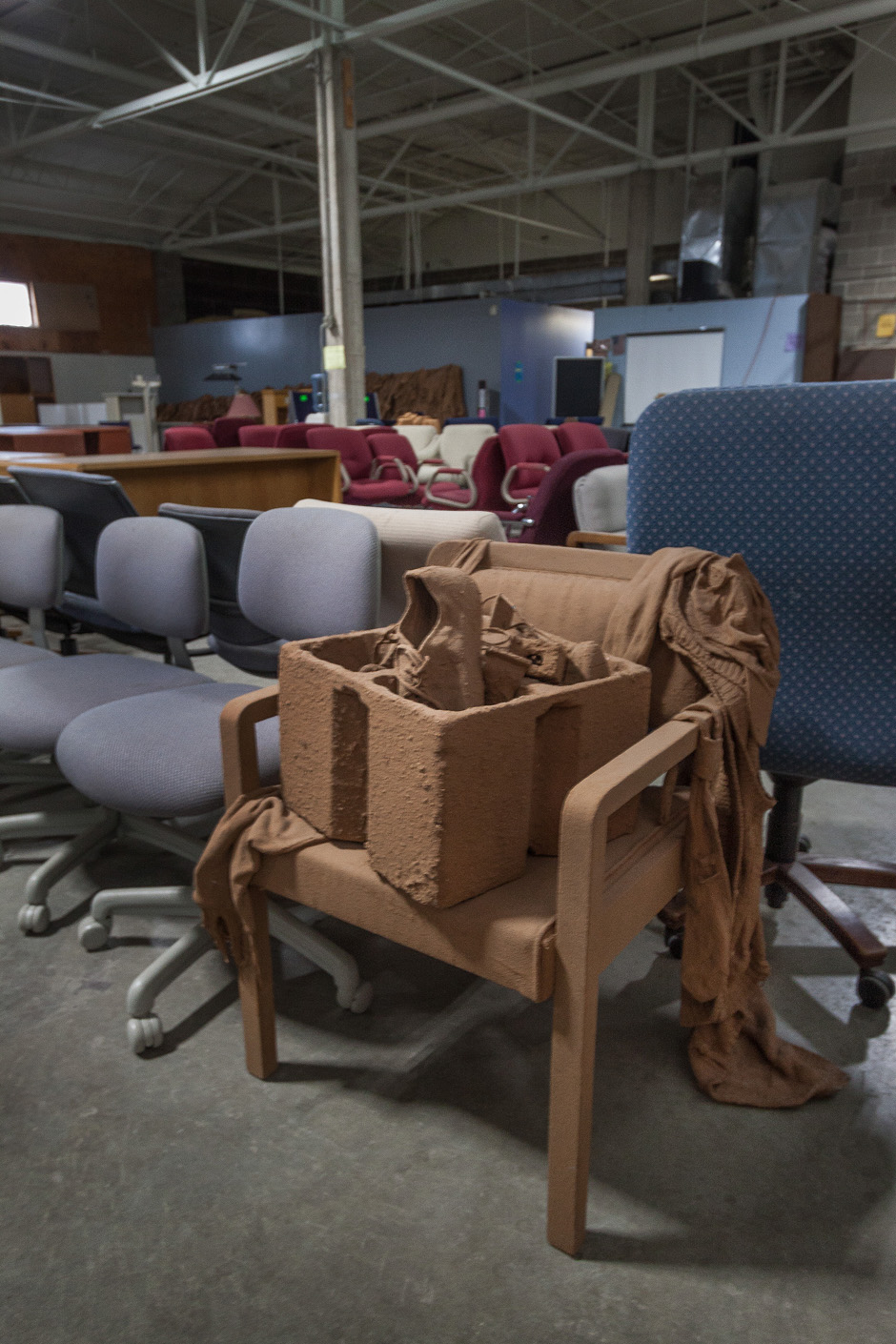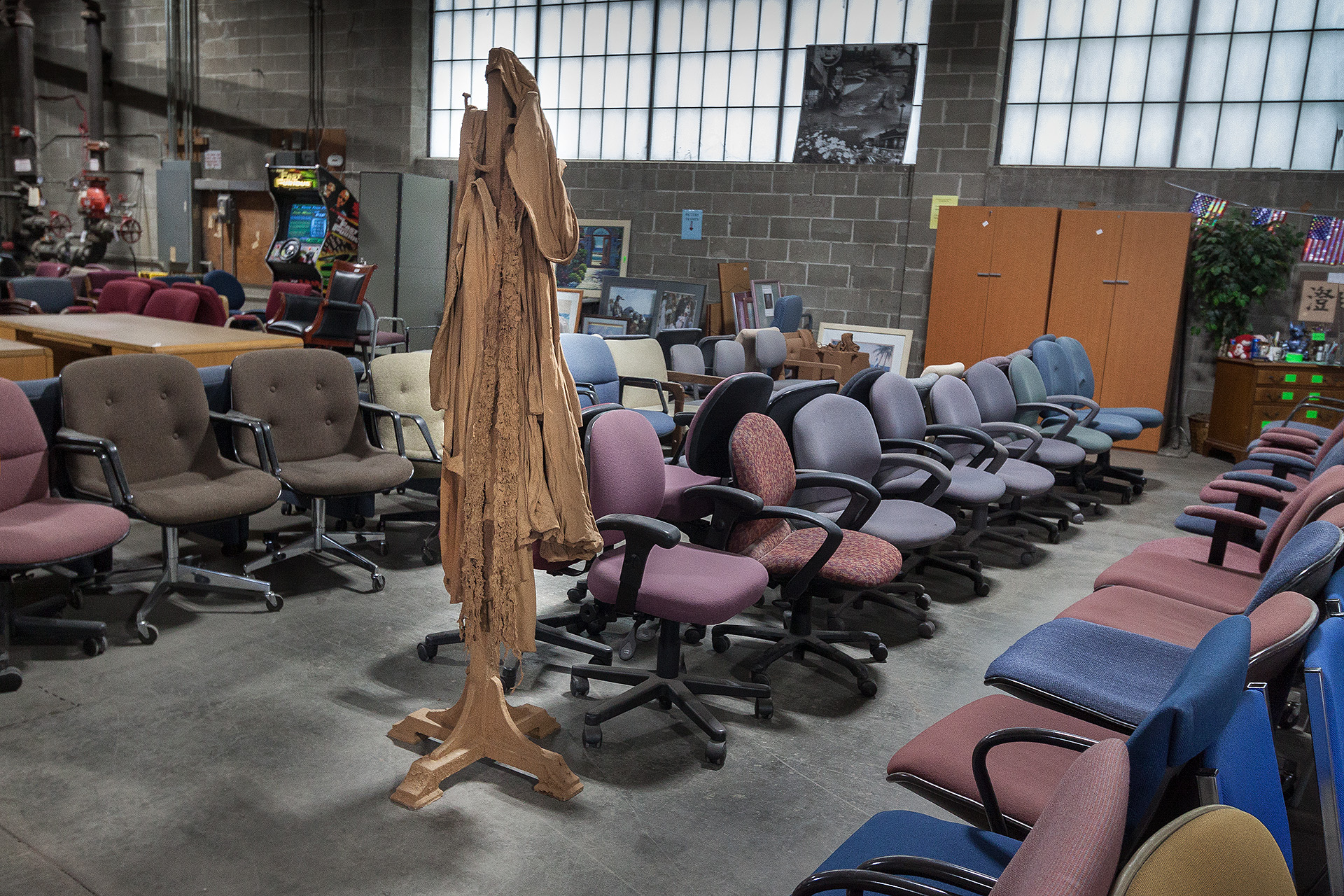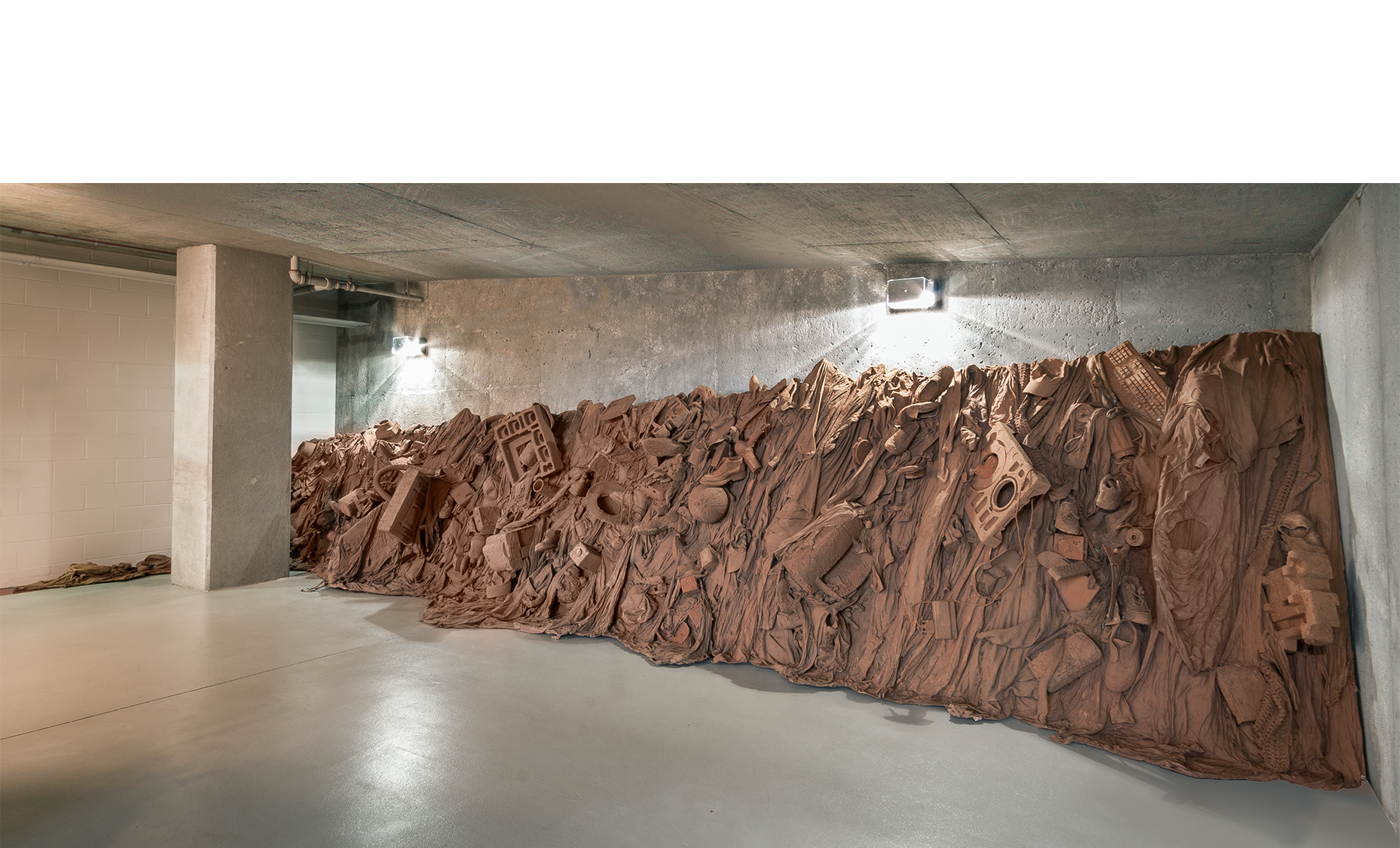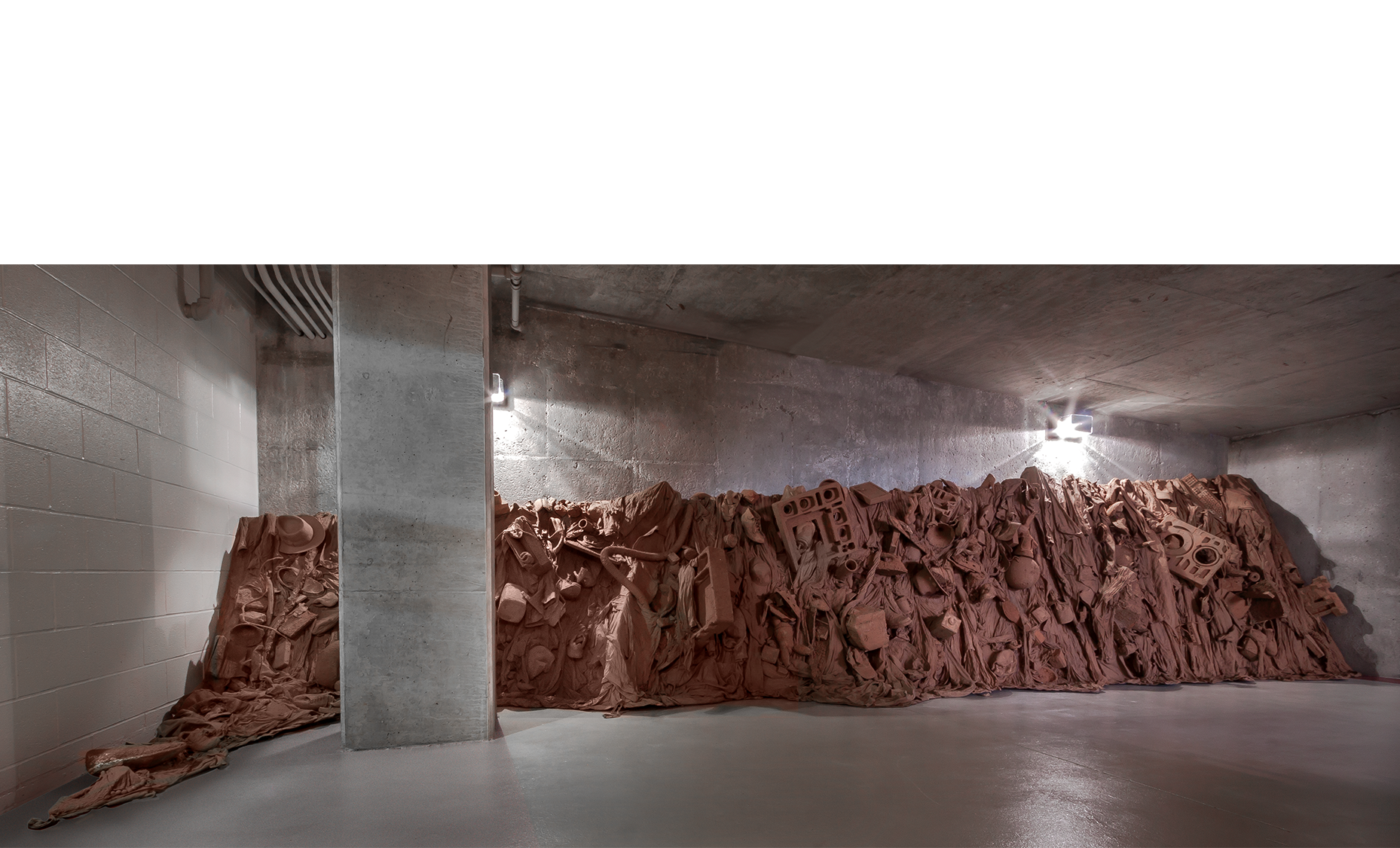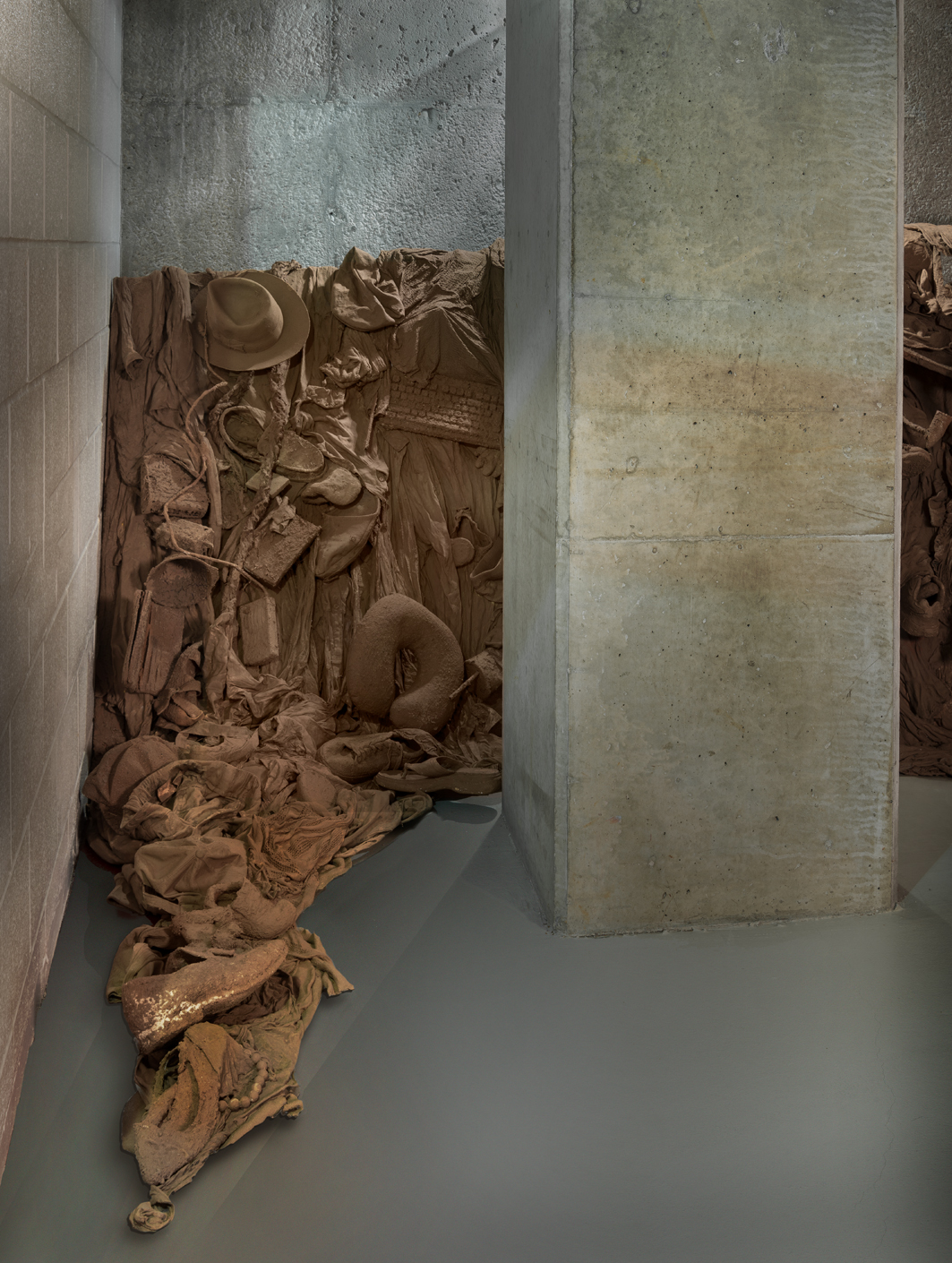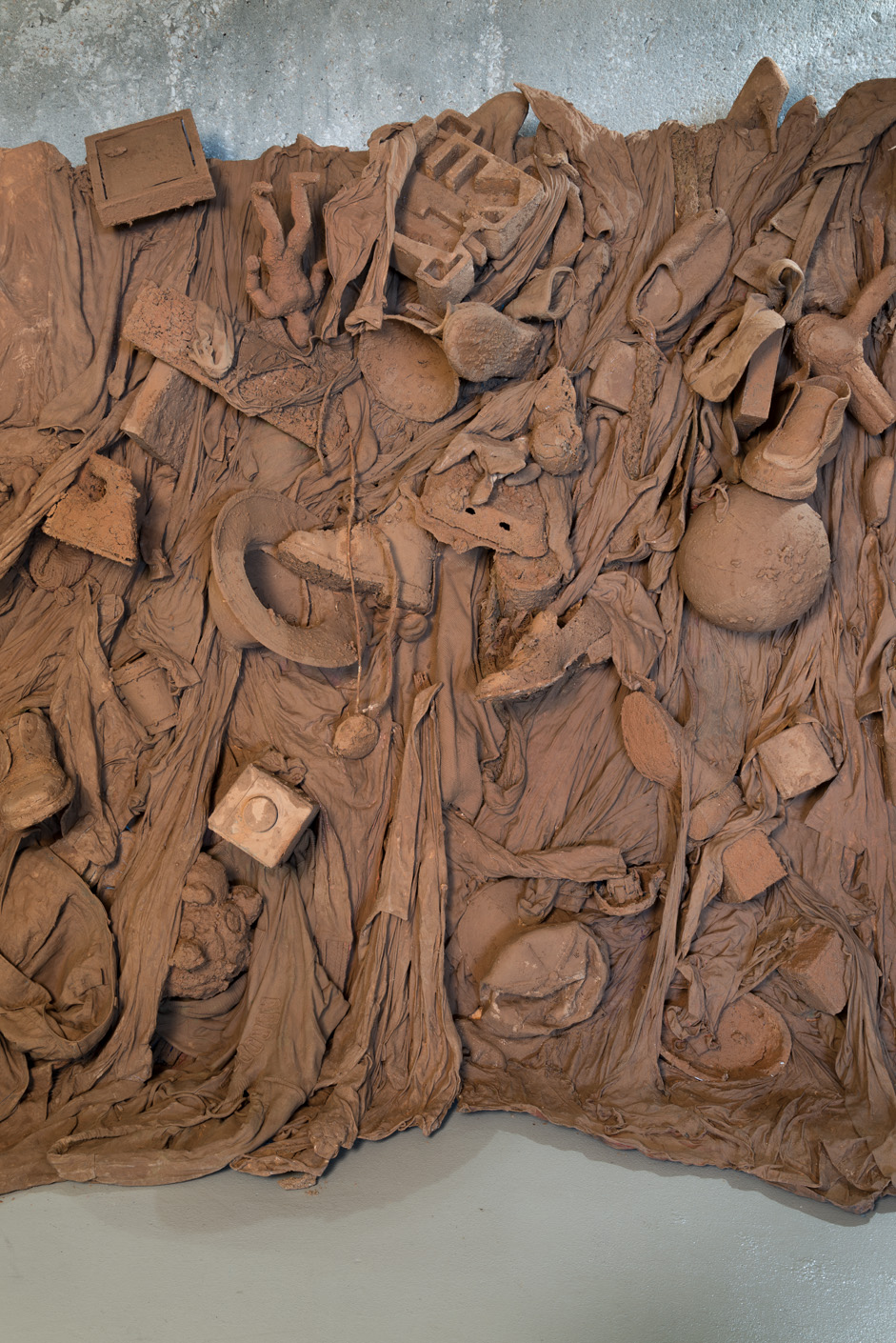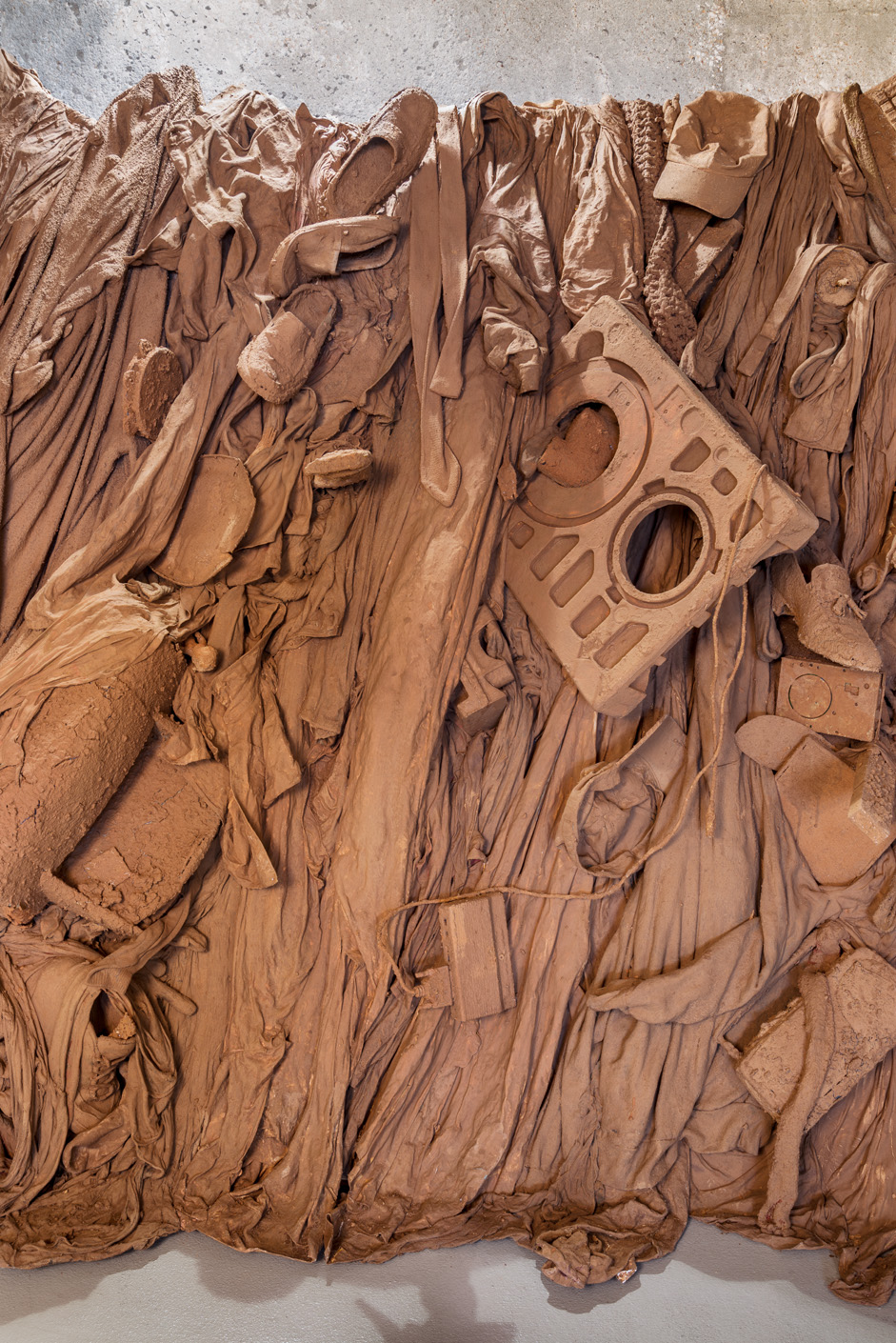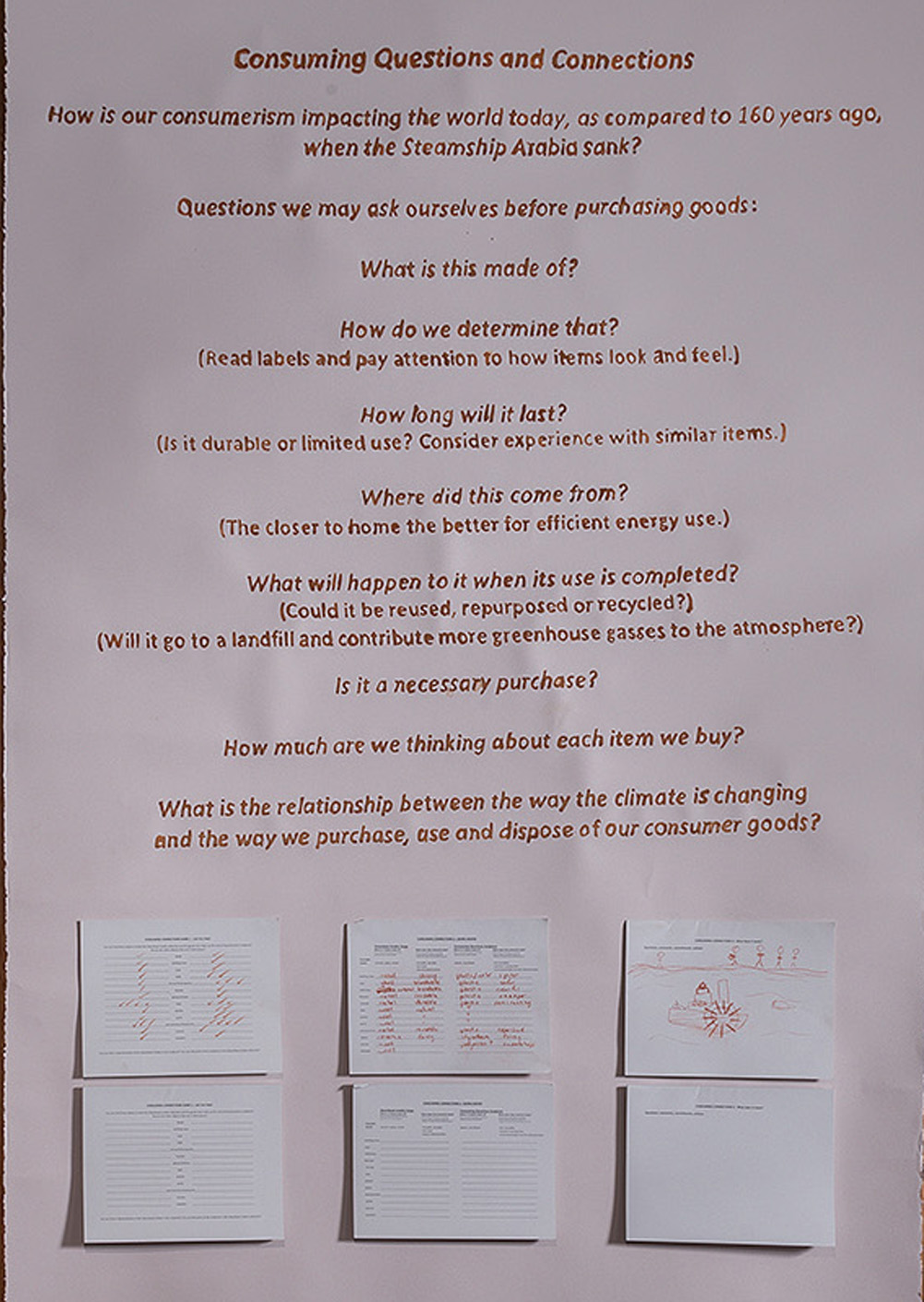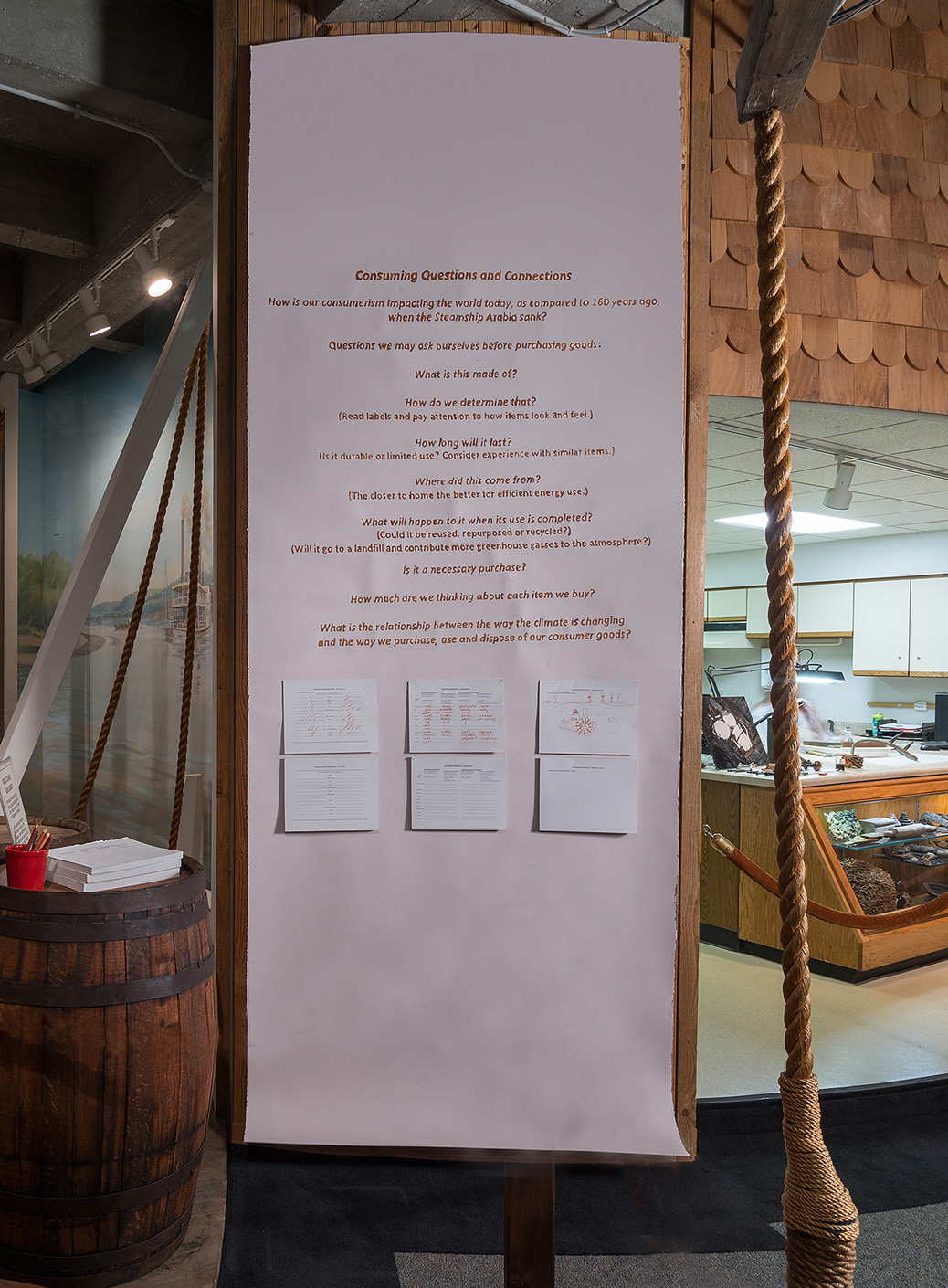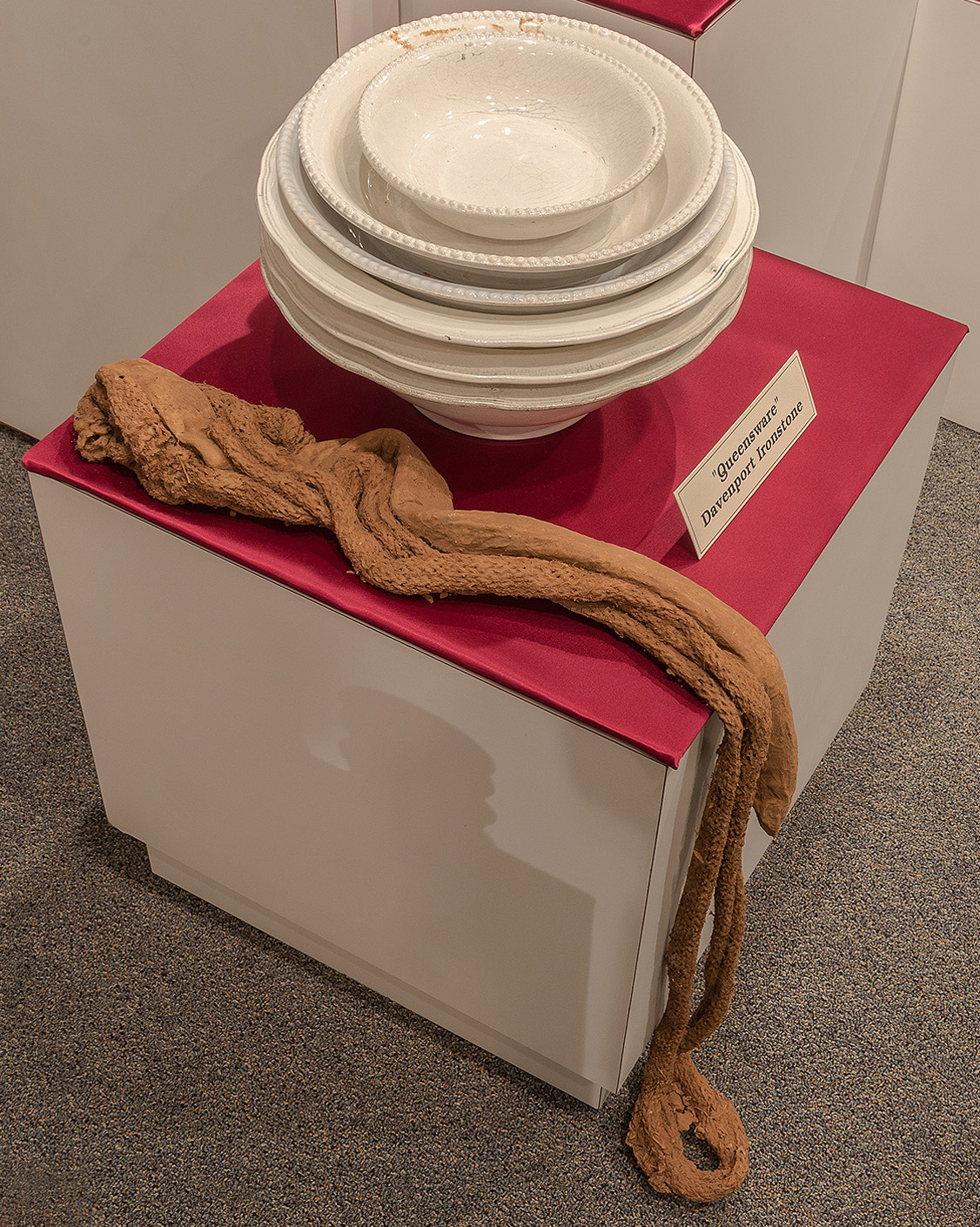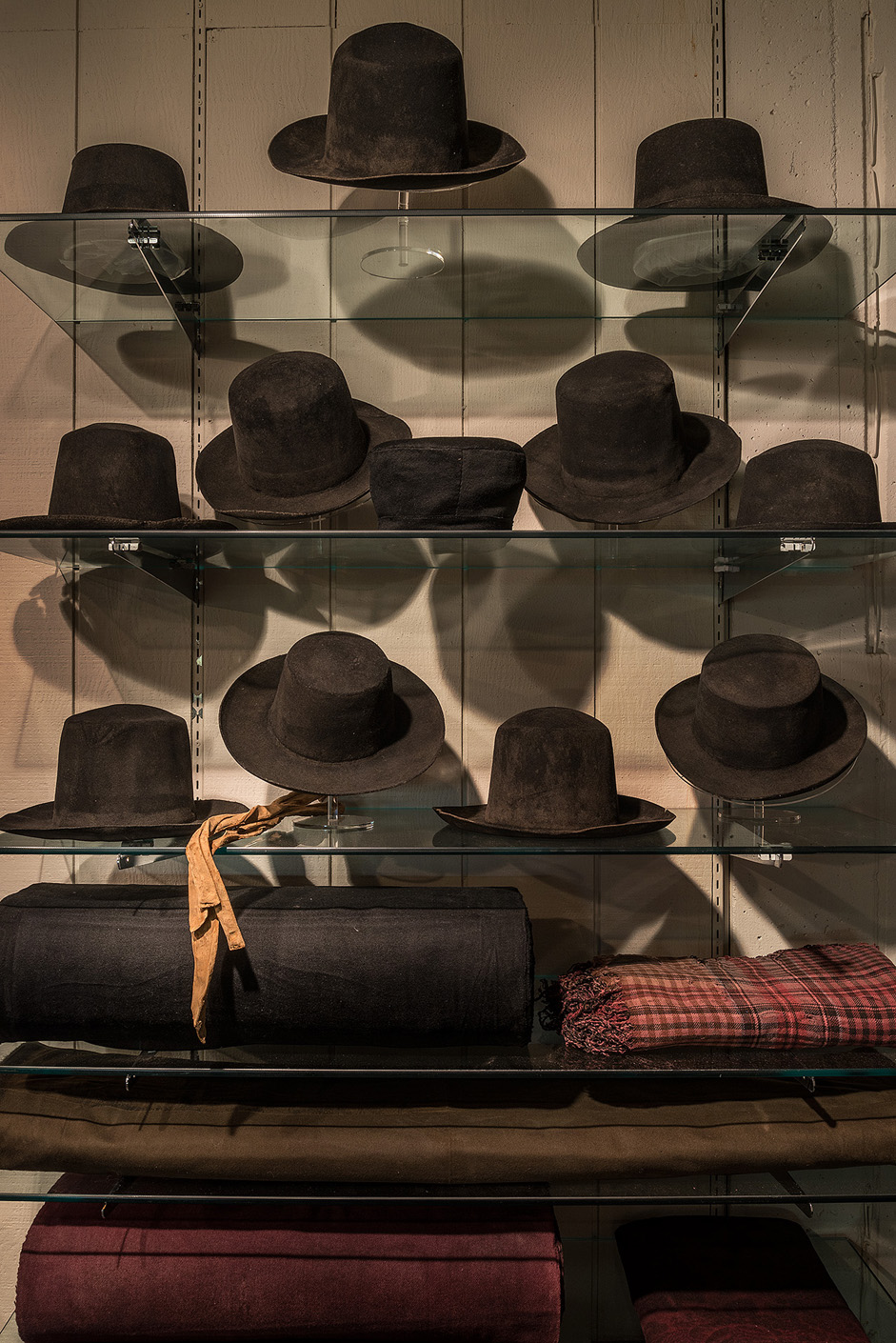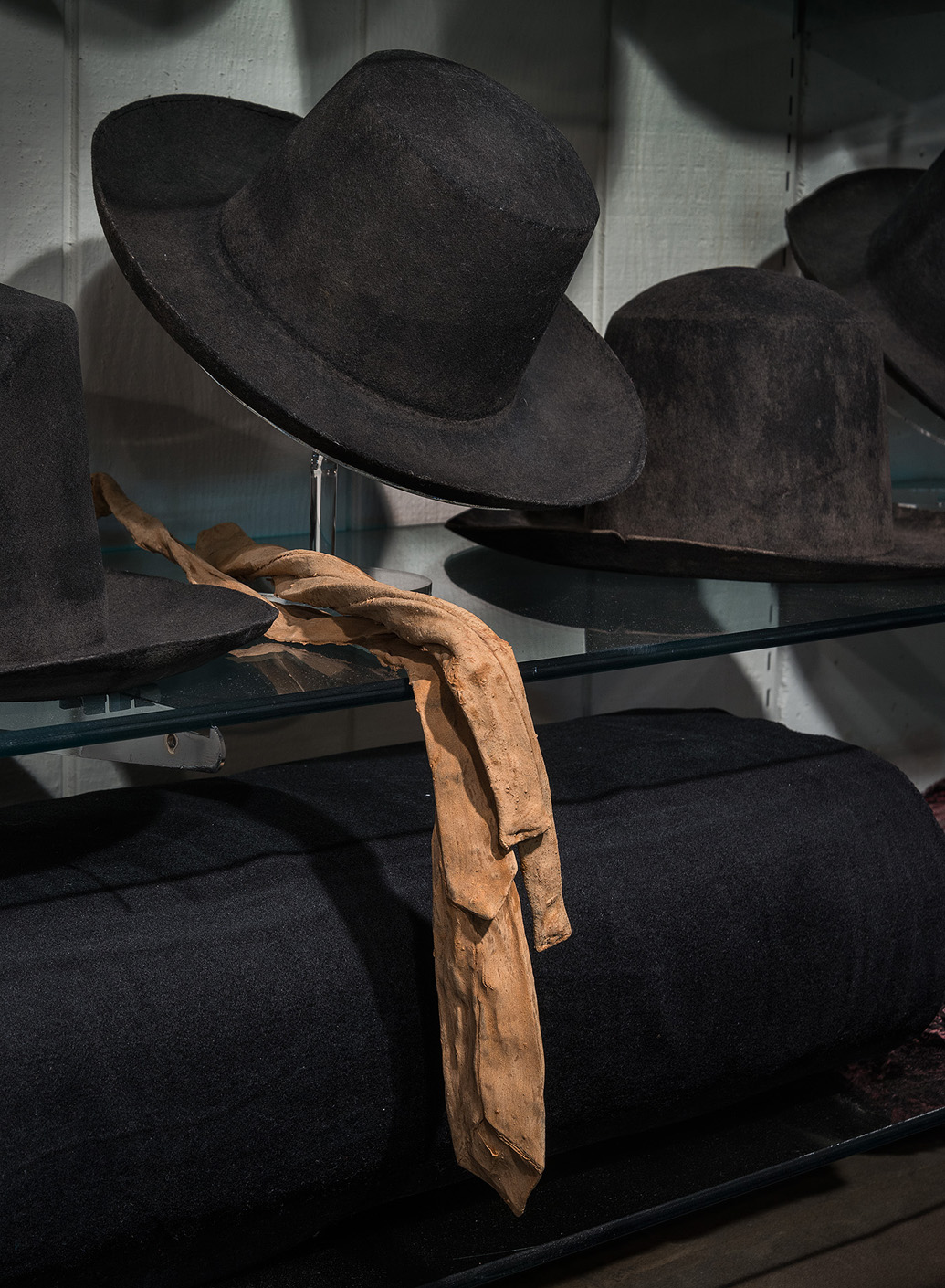Consuming Questions
2016
An avalanche or landslide of contemporary consumer goods encased in red Missouri mud
stabilized with PVA
26’ l x 5’ average height x 40” d
The ideas driving this work are derived from considerations of how our consumerism is effecting the world today. My research for Consuming Questions included personal experience with a landslide while on a recent sabbatical in Italy, and continued study on the cause and effects of global climate change, including our role in its precipitation. I trust that viewers may make some connections between the contemporary consumer goods buried in the mud of the sculpture, to those of the Steamboat Arabia which have been rescued from it. Which items in use today may we also find among the goods of the cargo of the Steamboat Arabia? The materials may differ, and often, as in the case of the funnel, for example, we now have a choice between metal or plastic. The metal funnels we see preserved in the cargo can be recycled while the plastic ones in the sculpture could exist forever. Hats, shoes and clothing, prominent in both collections, likewise may differ in that contemporary goods make use of non-biodegradable materials that are toxic to produce and could be permanent. All the kitchenware we see in the Arabia’s collection from the 19th century was durable and reusable. Today we use and throw away many items from bowls and plates to flatware.
My mind is activated by the thought of all those goods, those everyday items from160 years ago -- tools, dishes, shoes, jackets, shirts, pants -- lying buried in the earth under a field awaiting cultivation. It's a small miracle these items survived, in their stacks and crates, given that all of them were made of natural materials. It's also amazing that they were ever found at all, retrieved and restored, and that we may see them today. The thought of all those mud encrusted goods in the earth exists in my mind's eye. I am most drawn to aggregates like nails rusted solidly into a cylinder in the absence of their wooden barrel.
It’s said that all great cities exist near rivers. All rivers flow, finally, into the sea. In the time of the Arabia steamship, all the refuse we put in the river was biodegradable. Now in the Anthropocene, many of our goods are more permanent, most of them are plastic and non-biodegradable, some are toxic. We are putting things in the earth that will become part of its geologic strata. And yet now that there are more of us, more consumers disposing of things that are packaged in or made of plastics, these products and the toxic waste caused by their production are what we are throwing in our rivers. The consumer goods of today are what will remain of our culture to be discovered by others in the future if our species survives to make that kind of discovery.
Consuming Questions and Connections:
Things to think about as we consider our relationship to the goods we make or purchase:
-read the labels
-ascertain where something has come from
-what is it made of?
-is it durable?
-what will happen to it when it’s use is completed?
-where will it go?
and, possibly, most importantly,
-is it a necessary purchase?
Thinking of cause and effect:
What is the relationship between the way the climate is changing and the way we purchase, use and dispose of consumer goods?
